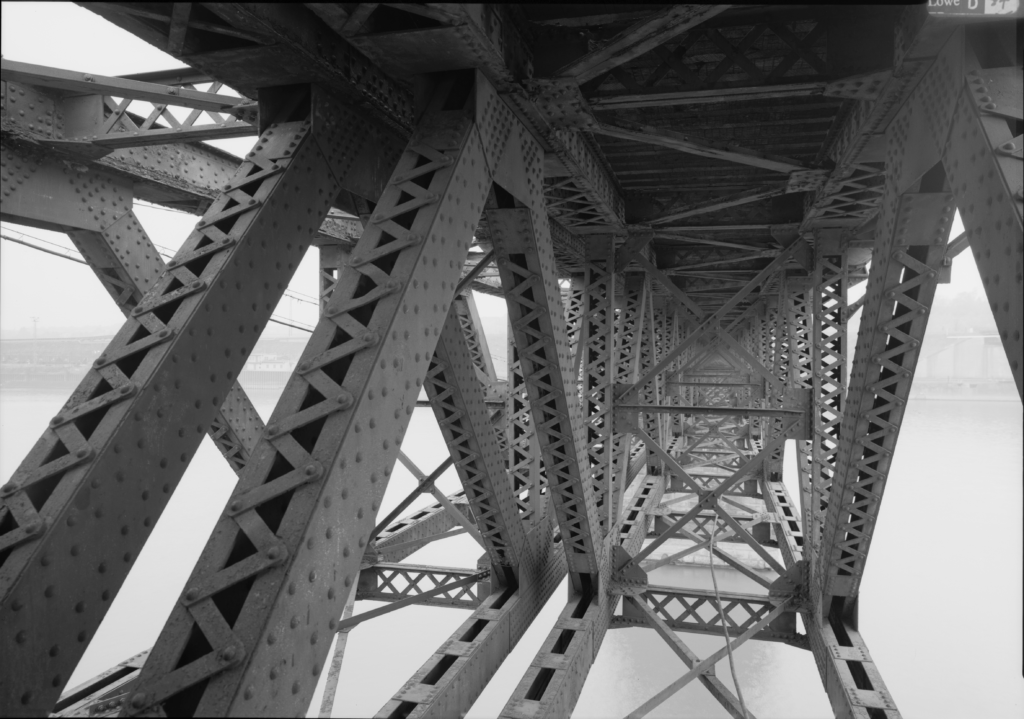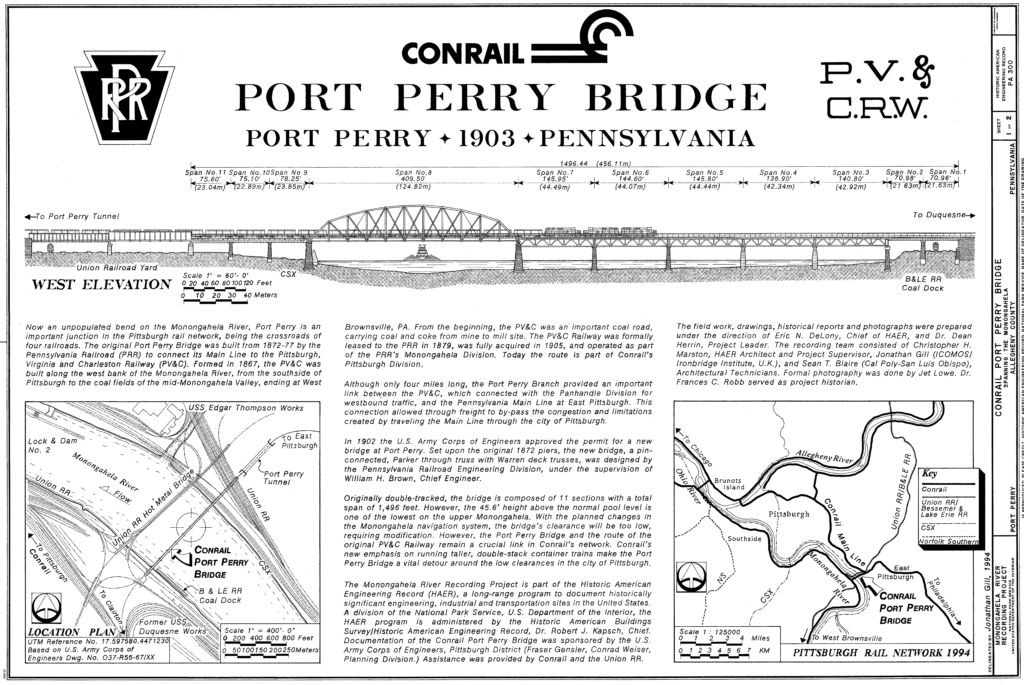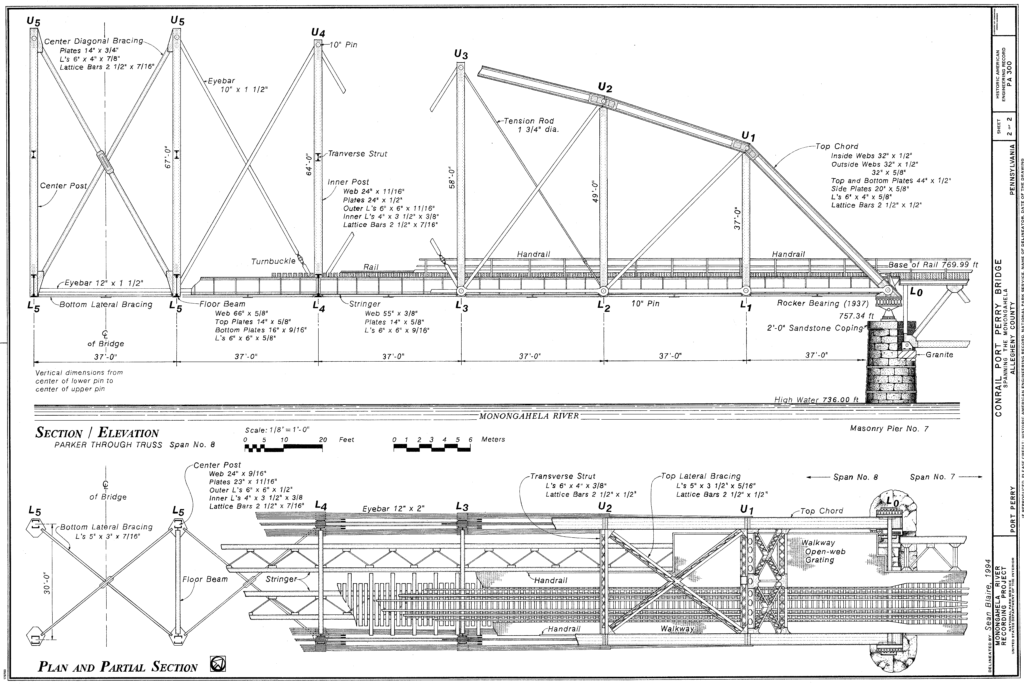Historic pin-connected Parker truss bridge offered Pittsburgh bypass

The Port Perry Bridge is a typical example of an early 20th Century pin-connected railroad bridge. Replacing a 1874 span, but using the foundation of it, the current span, designed by the Pennsylvania Railroad engineering department, was built in1904. [1]

While the rivers of Pittsburgh themselves provided a transportation route for goods, they also created an obstacle to the five main railroads that served the city. The Pennsylvania Railroad reached the city in 1852 when it served as the western terminus, joining the railroad with the Ohio River, allowing the transport of goods from the West back to the Eastern Seaboard. But in just 20 years, the city had become not a terminus, but the beginning of the railroad’s Midwestern connections. This led to tracks through the city becoming more and more crowded, leading the PRR’s directors to seek a route detouring around the city.

The solution they decided on was to connect two of the railroad’s branch lines, the Pittsburgh, Virginia and Charleston and the Port Perry railroads, by crossing the Monongahela River east of the city. The original span was completed in 1874. This allowed westbound trains to travel across the river to a route across the south side of the city to connect with the Pittsburgh, Cincinnati, and St. Louis railroad, avoiding the busier tracks through the downtown Pittsburgh.

As the route grew, heavier traffic and an increase in the size and weight of locomotives led the railroad to replace the original span. It was replaced with a Parker through-truss design with warren deck truss panels. Although riveted bridges were common in Europe, American engineers preferred pin-connected bridges because they could be built off-site and then shipped to the site for assembly. Set atop the original piers, the new bridge was double tracked over 11 sections, for a total span of 1,496 feet.

The Monongahela River recording project is part of the Historic American Engineering Record, a project of the National Park Service. Field work, drawings, and historical reports and photographs were prepared under the direction of Eric. N. DeLony, chief of HAER, and Dr. Dean Herrin, project leader. The recording team included Christopher H. Marston, HAER Arcitect; architectural technicians Jonathan Gill and Sean T. Blaire. Photography was done by Jet Lowe, and Dr. Frances Robb served as project historian. Michael Bennett and Lisa Pfueller Davidson edited and prepared the documentation for transmittal to the Library of Congress. More information can be found in the Library of Congress HAER survey number PA-300.